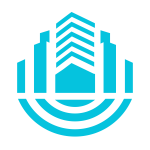Smart City & Quality of Life
Cities of the Future Face Challenges Shaped by Growing Population and Booming Worldwide Urbanization
Cities have always been centers of economic, political or social power and at the confluence of commercial, cultural, religious and spiritual exchange routes. They have played an important role in the organization of our societies and the structuring of our landscapes, accelerating the rural-urban population shift, and continue to guide the development of many countries. Cities still symbolize, for many human beings, the possibility of finally gaining access to a better life, to knowledge, to work, to health care or to housing.
Key macro trends are however already exacerbating challenges and pressure for cities authorities around quality of life, public governance, economy, urban planning, security, communications, basic resources, environment, social cohesion, human capital, as well as mobility and transport. Adequate water distribution, assured electricity supply and usage, sanitation including waste management, efficient urban mobility and transportation, affordable and appropriate housing, robust communication network, stable governance including citizen participation, healthy and sustainable environment, citizens safety and security, health and education for all are top challenges already faced by cities officials. And they will become even more critical for the development of cities of the future, this future not being so far away. Some figures to illustrate:
- Cities indeed continue to attract more and more people: urban population has been growing between 2% and 3% every year since the 1960s. Cities are now likely to absorb the total world population growth between 2010 and 2050[1]. By 2050, nearly 70% of the world population is projected to be living in urban areas[2]. Cities in developing countries will account for 95% of urban growth in the next twenty years and will shelter almost 4 billion inhabitants in 2025. In 2050, the numbers of people living in cities in countries in the South will be 5 times higher than in the North, as almost 80% of the world urban population will be in the countries of the South[3].
- Water will shortly become a geostrategic resource. As of 2019, 12% of the world population drinks water from unimproved and unsafe sources. More than 2.4 billion people (30% of the world population) live without any form of sanitation5. By 2050 4 billion people are projected to be still without access to basic sanitation. Global water demand is projected to grow by some 55%, by 2050, exacerbating tension around access to water, as well as its distribution and use.
- Global Greenhouse Gas (GHG) emissions are projected to increase by 50%, primarily due to a 70% growth in energy-related CO2 emissions, leading to climate change and average temperature increase. Compared to the year 2000, emission levels of SO2 are projected to be 90% higher and NOX 50% higher in 2050[4]. Air pollution concentrations in cities, particularly in Asia, already far exceed World Health Organization (WHO) safe levels, and they are projected to deteriorate further to 2050. Today, only 2% of the global urban population are living with acceptable PM10 concentrations (compared to the WHO Air Quality Guideline of 20 μg/m3). Approximately 70% of the urban population in developing countries are exposed to concentrations above the highest interim standard (above 70 μg/m3).
Governments, municipalities and local officials are now looking for appropriate tools to monitor, understand, decide and act to mitigate those risks and successfully face these challenges for the benefits of their citizens. IoT network technology and data-generating IoT sensors and devices are at the heart of cities digital transformation, whatever their size and population, and can help cities decision-makers to make quick and effective data-driven decisions.
[1] OECD (2012)
[2] Statista (2018a)
[3] THEYS and alii (2008)
[4] OECD (2012)
What can IoT do for Smart City & Quality of Life?
IoT solutions can help cities officials, operators, managers and decision-makers, as well as utilities and cities sub-contractors, to imagine, design, deploy and operate intelligent applications to collect data from their assets in real-time to provide real-time insights on city activity, energy consumption, operations and environmental impact. Relying on concrete and updated information, decision-makers will be able to take timely and appropriate actions to execute their public service duty, improve city quality of life, increase its cost-efficiency, and enhance its environmental sustainability.
Urban Operations
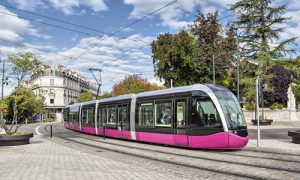
A lot of cities urban operations can directly benefit from IoT technology to automate their supervision and management, to reduce their global energy consumption, to improve their efficiency and cut their operational costs and to ultimately enhance their environmental sustainability and reduce their impact on climate change. This is typically the case for Smart Parking operations , Smart Streetlighting management, Smart Waste and Refuse value chain, Smart Traffic orchestration, Smart Public Transportation supervision, Smart Security enforcement and Smart Environment and Sanitation monitoring.
Utilities & Metering
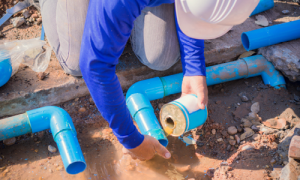
IoT technology has been improving water, gas and electricity distribution and metering operations for years now. Large scale projects in various countries have demonstrated the benefit of connecting distribution grids and smart meters to collect real-time information on consumption and other key metrics. Cities and utilities can benefit from IoT technology to power Smart Water, Smart Gas and Smart Electricity use cases to cut energy consumption and waste, improve urban building and housing sustainability and reduce cities environmental footprint. The ongoing development of alternative sources of energy and their related distributed networks, aka the Green New Deal, can immediately make the most of IoT solutions to monitor, manage and orchestrate Smart Green Energy production and distribution among public, private and individual stakeholders.
Retail & Public Places
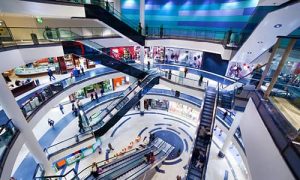
IoT technology is increasingly powering new tech retail solutions and bring retailers and malls operators unprecedented means to analyze, monitor and influence customer journeys when visiting their shops and shopping centers. Increasing competition requests innovative strategies to differentiate, generate traction, increase visits and provide consumers unprecedented in-store experience. Retail Stores, Shopping Malls as well as cultural places and public venues like Museums & Galleries can leverage IoT solutions to track visitors journeys, improve interaction and offer more immersive experience to increase satisfaction.
Infrastructures & Hubs

Fast developing cities are facing increasing challenges to build, maintain and operate more and more numerous key infrastructures needed to meet populations expectations. Civil engineers, real estate builders, road builders, tunnels builders or structure builders can use IoT technology to streamline building operations, monitor critical infrastructures over time, analyze surrounding environment and plan preventive maintenance before issues and accidents happen. Infrastructure Engineering is a key domain for IoT solutions deployment, and hubs like Smart Airports, Smart Railways and Smart Ports perfectly illustrate how IoT can serve multiple use cases on the same place to ease operations, reduce operational costs, automate processes and deliver value-added services to end-users or customers.
Quality of Life & Health

2020 worldwide pandemic illustrated the globalization of challenges related to Infection and Viruses. IoT has been instrumental in delivering clever responses to fight the spread of virus and to help populations go back to work and face the new normal. Urban development also puts additional stress on Food & Urban Agriculture to face consumers changing expectations for short-distance production, more healthy food and better traceability. IoT also delivers key solutions for better Air Quality monitoring to fight pollution outdoor and the spread of disease indoor.
How Kerlink can power Smart City & Quality of Life IoT Use Cases?
Comprehensive IoT Connectivity Portfolio
Since January 2014, when the company launched the world’s first carrier-grade outdoor LoRaWAN gateway, Kerlink has been the leading provider of industrial-grade IoT connectivity solutions, powered by LoRaWAN technology.
Trusted by large mobile networks operators, leading IoT new entrants and private businesses, Kerlink delivers:
- best-in-class carrier-grade LoRaWAN outdoor gateways, industrial-grade LoRaWAN indoor gateways,
- best-of-breed LoRa Network Server and cutting-edge IoT Network Operation & Management tools, with real-time, powerful and easy-to-use monitoring tools to ensure optimized coverage, maximum IoT network uptime and IoT connectivity lasting performance.
- and value-added IoT applications like native network-based and GPS-free Geolocation, to track and locate all IoT sensors, devices and tags connected to the LoRaWAN network (using triangulation, called Time Differential on Arrival – TDoA), and IoT Device Management, to remotely set-up, configure and monitor remote sensors and devices to ensure optimized connection to the network and grant maximum availability.
“LoRaWAN, thanks to its technical features, has become a de facto IoT standard that can efficiently complement cellular IoT networks to deliver the versatile and cost-efficient last-mile coverage required to unlock massive IoT deployments. In this dynamic, Kerlink, leveraging its leading-edge comprehensive hardware and software portfolio, is playing a key role to enable industrial-grade connectivity set-up to both public and private secure and evolutive IoT networks.”
Robin Duke-Wooley – CEO, Beecham Research
Best-in-class and Secure by Design Industrial-Grade Solutions
Kerlink R&D is mastering hardware development and embedded software design to create industrial-grade LoRaWAN gateways built on high-capacity systems, robust and long-term design elements, enhanced radio performance and interference mitigation. This carrier-grade robust design ensures the best radio performance and the best energy efficiency and reliability, even in building and industrial harsh environment.
“This major deployment in Baden-Württemberg demonstrates the excellent scalability, flexibility, and robustness of LoRaWAN networks, and the reliability of Kerlink LoRaWAN gateways. Kerlink’s flexible configurations simplified making its carrier-grade hardware compatible with our ELEMENT-IoT platform – a comprehensive middleware for device, network, data, and user management.”
Dr. Gerald Troppenz, Business Development Manager Zenner IoT Solutions
Kerlink also offers a unique heightened built-in level of security for its indoor and outdoor IoT gateways, granting unrivalled native security by design for IoT networks and infrastructure. Delivering first-class performance, robustness, scalability and simplicity of use, Kerlink best LoRaWAN IoT Solutions are designed to cost-efficiently power private and shared IoT networks for smart building and smart industry use cases. Kerlink’s best performance LoRaWAN gateways are perfectly designed to connect IoT sensors and devices in wide industrial areas or complex building structures and to offer the best value for money and total cost of ownership (TCO), over time.
Kerlink is also constantly improving its efficiency, operations control, and processes through its Quality Program and is ISO 9001-2015 certified since mid-2016 for its “design, development, and sales process of network solutions for the Internet of Things”.
Outstanding Customer Support
Kerlink is recognized for the quality of its expert technical and customer support team. Having geo-relevant, flexible and scalable field operations and support, Kerlink has invested heavily on personnel, systems and training to ensure its customers are supported throughout their IoT journeys. From IoT gateways customer-specific prestaging, frontline support desk, project management, expert and tailored professional services to customer success management, Kerlink cares about its customers’ journey to deliver the best overall customer experience.
Open Interfaces and Strong Ecosystem of Partners
Kerink is a founding and board member of the LoRa Alliance since 2015. Kerlink crystalizes a strong ecosystem of LoRaWAN partners to integrate its best-in-class IoT connectivity building blocks with innovative IoT sensors and devices and smart vertical IoT applications, to deliver end-to-end IoT solutions. Because one size does not fit all and that each project is unique, Kerlink capitalizes on API-first design, open interfaces and standard protocols to ease the integration with partners and deliver customized IoT solutions. IoT connectivity is not a commodity and remains the spine of any IoT solution. Communication is everything!
Why is LoRaWAN relevant for Smart City & Quality of Life?
LoRaWAN Low Power Wide Area Networks (LPWANs) using LoRa communication can help cities managers, local authorities, communities, smart city ecosystem players, utilities, airports and ports officials as well as retailers to better monitor, control and manage every aspect of cities activity. They can help to monitor electricity and water consumption to improve energy efficiency, reduce greenhouse gas (GHG) footprint and increase sustainability. They can control assets to improve streetlighting, waste management, traffic operations, public transportation, as well as urban security and environment. They can help to optimize retail, malls and public venues attendance and operations to cut costs and increase customers’ and visitor’s satisfaction. They can power infrastructures, airports and ports monitoring and management, while improving day to day quality of life in cities. LoRaWAN communication delivers the appropriate combination of key capabilities to ensure reliable, cost-efficient and futureproof connectivity to power smart city & quality of life. Learn why.
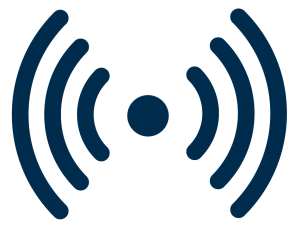
Long-Range Communication
Connectivity has always been an issue for wide urban and commercial areas, large infrastructures and wide hubs, like airports and ports, mainly due to the lack of / poor indoor coverage proposed by mobile network operators and the expensive price of their cellular subscriptions. LoRaWAN technology now offers long-range communication (up to 25 km) to connect distant outdoor IoT sensors, on wide areas, and flexible network design to ensure optimized and tailored coverage, in all types of urban, commercial and operational dense environments. This is the best IoT connectivity for many smart cities, malls and smart hubs use cases.

Low Power Consumption
LoRaWAN technology has been specifically designed and optimized to reduce the power consumption of IoT sensors and extend their battery lifetime up to 15+ years, making LoRaWAN-enabled IoT sensors able to work between 5 and 10 times longer than sensors using traditional cellular networks. The extended lifespan of sensors, tags and trackers used on the field increase peace of mind for urban, commercial and hubs operations, while improving visibility on the return on investment (ROI).
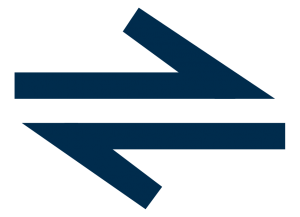
Bi-directional communication
LoRaWAN protocol enable fully bidirectional communications to collect data from deployed IoT sensors, but also to send messages to the equipment used on the field. This can be particularly useful to remotely control and manage assets like energy meters, streetlights, waste containers, parking sensors, traffic signs, security devices, air quality sensors, retail counting beacons, ground support equipment, solar panels or windmills, to name few examples.
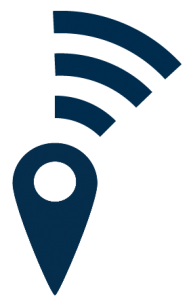
Native geolocation
LoRaWAN technology offers native geolocation to locate IoT sensors, trackers and tags connected to the network. This network-based solution is using triangulation (called Time Differential on Arrival or TDoA), a GPS-free geolocation technology that does not require additional power nor additional costly hardware component, and does not increase energy consumption of located devices. Thus, any LoRa-enabled device connected to the network, whatever its type, can be located and tracked. For indoor location, LoRaWAN can also be combined with Bluetooth Low Energy (BLE) or Wi-Fi to improve accuracy for urban, retail and airport use cases.
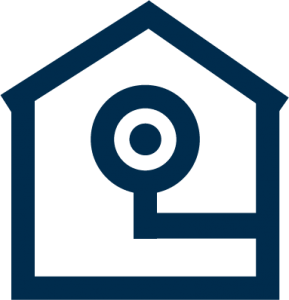
Deep indoor coverage
LoRaWAN IoT Communication delivers deep indoor penetration, enabling robust IoT connectivity to reach sensors and devices in remote indoor or underground locations in urban dense areas or within buildings, without consuming extra power. This is especially relevant to connect equipment located on buildings floors, basements or underground shelters, like water and energy meters, air quality sensors, tracking sensors or parking nodes.
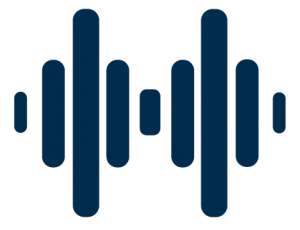
Free Unlicensed Frequencies
LoraWAN protocol operates on license-free and cost-free ISM (Industrial, Scientific, Medical) spectrum – EU 868 MHz, AS 923 MHz, US 915 MHz – allowing any city official and manager, utility operator, airport and port authorities or smart city service provider to quickly and flexibly deploy and operate private or shared IoT networks, without acquiring a license from the regulator nor paying fees to use a license. This considerably simplifies the access to this IoT connectivity and reduces initial investment and operating expenses, thus enabling the available capital to be invested in cities, infrastructures and hubs equipment and development.
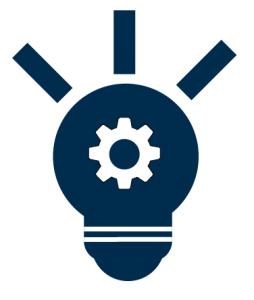
Open Standard and Growing Ecosystem
LoRaWAN technology leverages an open protocol approach, led by the LoRa Alliance which federates the specification, development and deployment of this standard, elaborates certification guides, and ensures interoperability between all IoT connectivity and IoT sensors providers. This grants futureproof IoT solutions, with no vendor lock-in, a seamless and quick deployment, and the ideal scalability and versatility to connect various cost-efficient smart city and quality of life use cases.
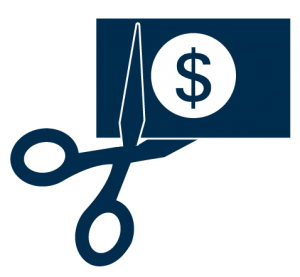
Cost-Efficiency
LoRaWAN communication offers the lowest cost for IoT network infrastructure deployment and maintenance over time, thanks to its long range, redundancy, scalability and versatility. IoT connectivity usage is also very cost-efficient as it does not require any license fees. A LoRaWAN LPWAN (low power wide area network) is ten times less expensive than a cellular network. This leads to streamlined real estate facility management and IoT network infrastructure capital expenditure (Capex) and reduced operational expenses (Opex). This thus allows cities managers and officials, utilities leaders, airports and ports decision makers, as well as smart city service providers to concentrate investment on city, infrastructure or hub equipment and development, for the benefit of the entire community.

High Security
LoRaWAN protocol is using 128-bits Advanced Encryption Standard (AES) algorithms to ensure end-to-end high encryption with two combined layers: one for the IoT network provider – to ensure the mutual authentication between a LoRaWAN-enabled IoT sensor and the LoRaWAN IoT network used – and another for the user – to ensure that the IoT network provider does not have access to the end user’s collected data and application -. LoRaWAN technology is one of the few wireless technologies to implement end-to-end robust encryption for data (called payloads) exchanged between the IoT sensors and IoT business applications servers. This grants future-proof security and confidentiality of bi-directional data exchanges for smart city and quality of life IoT applications.
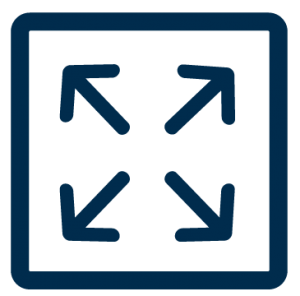
High Scalability and Capicity
LoRaWAN technology enables high scalability and capacity networks to support thousands of connected IoT sensors and devices and transmit millions of messages, making it the ideal choice for long range / indoor and low power deployments for cities, infrastructures and hubs. LoRa LPWAN (low power wide area network) high capacity and multi-usage capabilities can support high device capacity on a single IoT network. Industrial-grade and carrier-grade IoT connectivity solutions, powered by LoRaWAN protocol, offer performant, robust and reliable connectivity for private or shared networks to grant a unified and scalable multipurpose infrastructure, to efficiently serve smart city and quality of life IoT applications and use cases.
LoRa Alliance Whitepaper
We live in a rapidly urbanizing world, in which two-thirds of the population will live in cities by 2050, adding another 2.5
billion city-dwellers to the current just over 4 billion urban residents.
Smart cities are the ultimate in interconnected, intelligent infrastructure, with services, devices and systems linked that encompass simple inputs such as sensors on waste bins or controls for streetlighting to complex citizen services
composed of multiple systems integrating with each other to enable smart transportation or connected vehicles.



